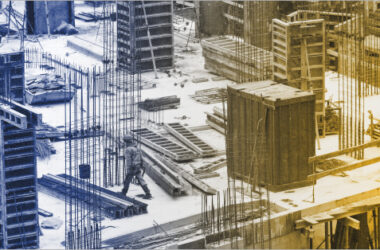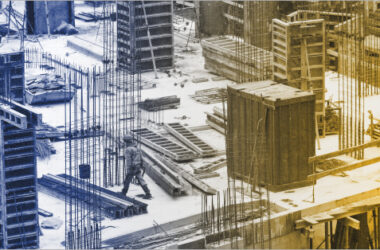Embarking on a construction project in India is an exciting time. But amidst the planning and anticipation, securing the right insurance coverage can feel overwhelming. Erection All Risk (EAR) Insurance is a crucial component for safeguarding your project from unforeseen perils. However, surrounded by technical jargon and misconceptions, Erection All Risk insurance can often raise more questions than it answers.
This blog post is here to shed light on the truth and clear all the confusion! Here, we will look into 10 common misconceptions about Erection All Risk insurance, empowering you to make informed decisions. So, let’s get going and debunk the myths surrounding Erection All Risk insurance in India!
Before diving into the core topic, let’s start our journey with the basics..
Erection All Risk Insurance: A Brief Overview
Erection all risk insurance is a type of comprehensive coverage designed to protect against a wide range of risks associated with the installation, assembly, and testing of machinery, equipment, and infrastructure projects. It provides coverage for both material damage and third-party liability arising from accidents or unforeseen events during the erection process. erection all risk insurance typically encompasses various phases of construction, including transportation, storage, and erection, offering financial protection against perils such as fire, theft, vandalism, natural disasters, and human error. An Erection All Risk insurance policy in India is essential for construction projects to mitigate the financial burden of potential losses and ensure smooth project completion.
10 Common Misconceptions About EAR Insurance Policy India
Here we are discussing ten common misconceptions about Erection All Risk insurance, aiming to shed light on its nuances and importance-
1. An Erection All Risk insurance policy Covers Only Machinery: This is a prevalent misconception. While EAR insurance does cover machinery, it also extends its coverage to various other aspects of a project, including erection, installation, and testing of equipment, as well as civil engineering works associated with the project.
2. EAR Insurance is Only Relevant for Large-scale Projects: While it’s true that erection all risk insurance is often associated with large-scale projects such as power plants, refineries, or infrastructure projects, it is equally relevant for smaller-scale projects. Any project involving the installation of machinery or equipment can benefit from EAR insurance.
3. EAR Insurance is Cost-prohibitive: Another common misconception is that an Erection All Risk insurance policy in India is excessively expensive, particularly for smaller businesses. However, the cost of EAR insurance can vary depending on various factors such as the nature of the project, the value of the equipment involved, the location and the risk profile. In many cases, the potential cost of not having EAR insurance in the event of a loss far outweighs the premiums paid.
4. EAR Insurance Covers All Types of Risks: While erection all risk insurance provides comprehensive coverage against a wide range of risks, including accidental damage, fire, theft, and natural disasters, there are certain exclusions and limitations. It’s essential for policyholders to carefully review the terms and conditions of their policy to understand what is covered and what is not.
5. EAR Insurance is Not Necessary if Contractors Have Liability Insurance: Liability insurance covers third-party claims for bodily injury or property damage caused by the insured’s operations. However, it does not provide coverage for damage to the insured’s own property or equipment. An Erection All Risk insurance policy fills this gap by providing coverage for such risks during the erection and installation phase of a project.
6. EAR Insurance is Optional and hence is of little importance: While Erection All Risk insurance is not legally required in India, it is often a contractual requirement imposed by project owners, lenders, or other stakeholders. Failure to obtain adequate insurance coverage can result in project delays, financial losses, and legal liabilities.
7. EAR Insurance Provides Unlimited Coverage: While Erection All Risk insurance provides coverage for specified risks up to the policy limits, there are usually sub-limits, deductibles, and exclusions that can affect the extent of coverage. Policyholders should carefully review these details and consider whether additional coverage or endorsements may be necessary to adequately protect their interests.
8. EAR Insurance Only Covers New Equipment: While EAR insurance is commonly associated with new construction projects, it can also provide coverage for the installation of used or refurbished equipment. However, insurers may impose additional conditions or restrictions for such coverage, such as age limits or inspection requirements.
9. EAR Insurance is Only Relevant During the Construction Phase: An Erection All Risk insurance policy primarily covers risks during the construction or installation phase of a project. However, it can also provide coverage during subsequent phases such as testing, commissioning, and initial operation. Some policies may also offer extended maintenance coverage for a specified period after completion.
10. EAR Insurance Claims Are Always Straightforward: While insurance claims are intended to provide financial protection in the event of a loss, the claims process can sometimes be complex and contentious. Insurers may dispute coverage, claimants may encounter delays or administrative hurdles and the resolution of claims may involve negotiations or legal proceedings. Policyholders need to maintain thorough documentation, adhere to reporting requirements, and seek assistance from experienced insurance professionals if necessary.
Final Thoughts
Erection All Risk Insurance India is a crucial risk management tool for construction and engineering projects. By dispelling common misconceptions and gaining a better understanding of its coverage, limitations, and benefits, project stakeholders can make informed decisions to protect their investments and mitigate potential risks.








